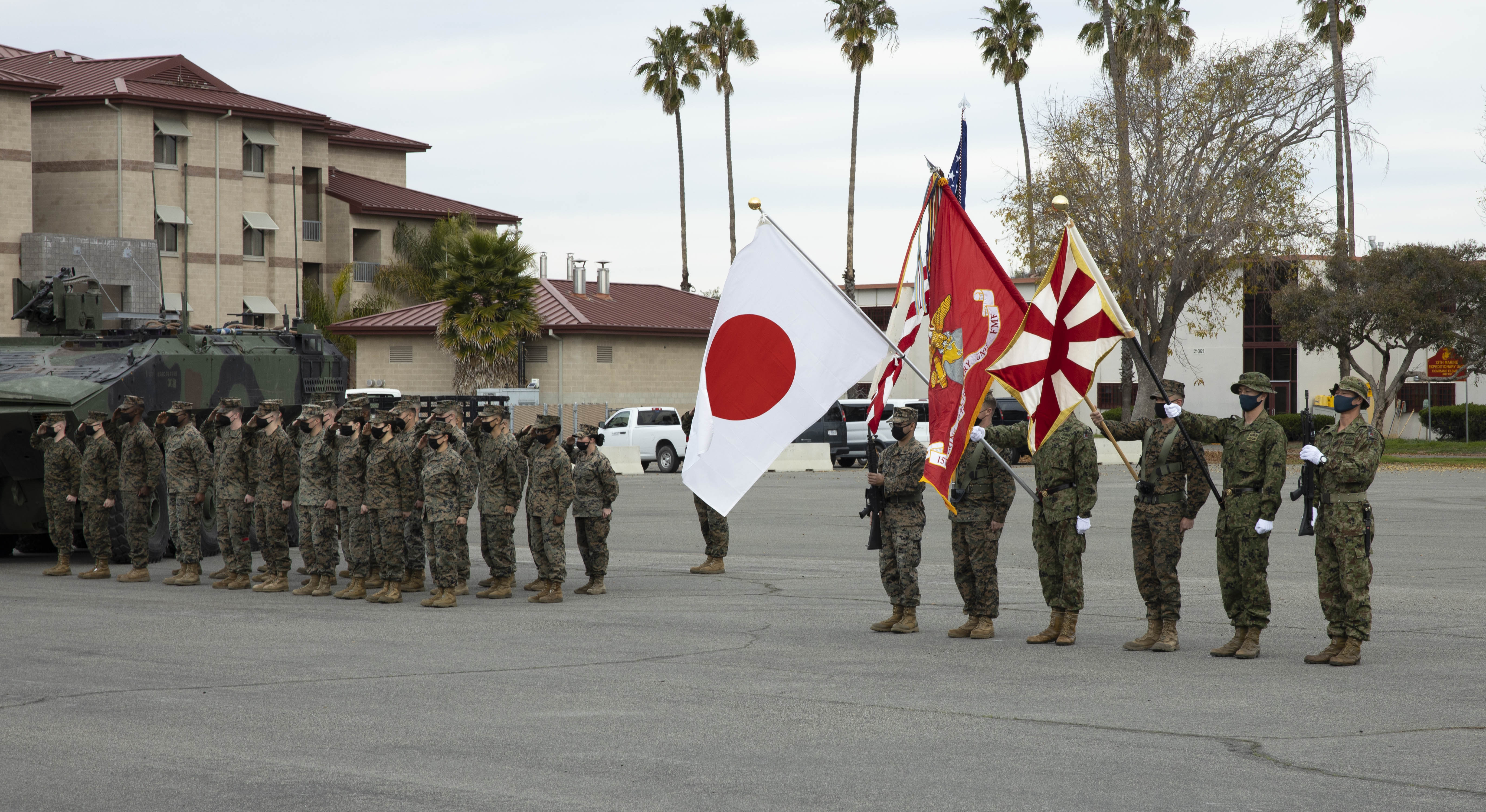
CAMP PENDLETON, Calif. – The U.S.-Japan amphibious exercise Iron Fist will include waterborne training with the Marine Corps’ newest amphibious combat vehicles.
The annual Iron Fist the Marine Corps, the Navy and the Japanese Ground Self-Defense Force has been held here annually since 2006, but the pandemic forced officials to cancel the bilateral training last year.
This year marks a return of about 200 members of JGSDF’s 2nd Amphibious Rapid Deployment Regiment forces that had participated in 2020. “It’s a smaller footprint this year of essential troops to complete the training mission,” Capt. Stephanie Leguizamon, a 15th MEU spokeswoman, told USNI News. “Of course, COVID-19 mitigation is a factor.”
The Japanese force, led by Col. Kazuhiro Irie, includes the regiment’s Amphibious Assault battalion, infantry troops with 1st Company, Field Artillery Battalion’s 1st support team, and unmanned aerial vehicle operators, Leguizamon said.
For the next six weeks, they will join Marines with 2nd Battalion, 4th Marine Regiment and other I Marine Expeditionary Force supporting units on the ranges and beaches for training that will include advanced marksmanship, amphibious reconnaissance, fire and maneuver assaults, logistics and medical support, and fire support operations, according to the 15th MEU.
The training includes operations with the ACV, which recently resumed waterborne operations after Marine Corps officials lifted restrictions to operations in unprotected waters that were imposed in September 2021 because of a faulty towing mechanism. Such training is seen as critical to Japan as it looks to expand its capabilities to conduct joint amphibious operations as part of its broader maritime defense strategies in the Pacific region, where tensions remain, notably with China and North Korea, over contested claims to islands and territories.
This year’s exercise also has a smaller maritime component to it supported by the Navy’s Amphibious Squadron 5, based in San Diego. The overall Iron Fist exercise will culminate Feb. 4 in a bilateral assault in urban terrain.
The Amphibious Rapid Deployment Brigade, which formed in 2018, is the amphibious component of Japan’s self-defense forces. The brigade has been developing Japan’s amphibious doctrine and training with the guidance of both I Marine Expeditionary Force at Camp Pendleton and III MEF based in Okinawa, Japan.
“Our ability to integrate our militaries at sea and ashore is critical to the success of this exercise and a hallmark of our long standing partnership,” Col. Sean Dynan, who commands the 15th Marine Expeditionary Unit, said in remarks during the opening ceremony Monday outside the unit’s headquarters at Camp Pendleton.
“For decades, the partnership and trust between the United States and Japan has been crucial in ensuring security across the globe. As our adversaries become more assertive and we navigate the dynamic landscape of competition and conflict, we can rest assured that we do not face these challenges alone, but hand-in-hand as allies,” Dynan said.
While Marines routinely train with Japanese ground and maritime forces in and around Japan, including during multilateral exercises in the 7th Fleet region, Iron Fist gives the visiting JGSDF troops the chance to experience vastly different environments and use Camp Pendleton’s extensive range facilities.
“Over the next few weeks, the Marines, sailors, and Japanese soldiers will conduct training together; ranging from advanced marksmanship, operations in urban terrain, live fire and maneuver, logistics and medical support, fire support operations, combined staff planning, an amphibious assault and much more,” Dynan told the crowd.
“From ship to shore, this training will stress the coordination and capabilities required to fully integrate as a combined team. Our ability to quickly aggregate and deploy from the sea as a Marine-Navy team and U.S.-Japanese combined force takes practice,” he said. “Over the next month we will gain an appreciation for the unique character and capabilities of our units. And we will practice. And by doing so we will improve our ability to operate together and ensure that the spirit and character of our partnership continues to flourish.”
Joint U.S.-Japan amphibious training exercises have been expanding in scope and intensity in recent years since the ARDB’s formation both in the U.S. and in the western Pacific region.
“The United States and Japan share common goals in the Indo-Pacific region such as freedom of navigation, economic prosperity within the rules of international law, and deterrence of aggression,” Lt. Gen. George W. Smith, Jr., the I MEF commander, said in a news release. “Exercises like Iron Fist affirm U.S. commitment to our allies and our strategic objectives.”





